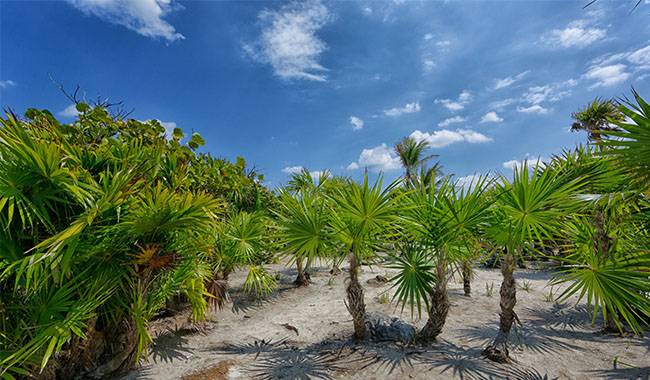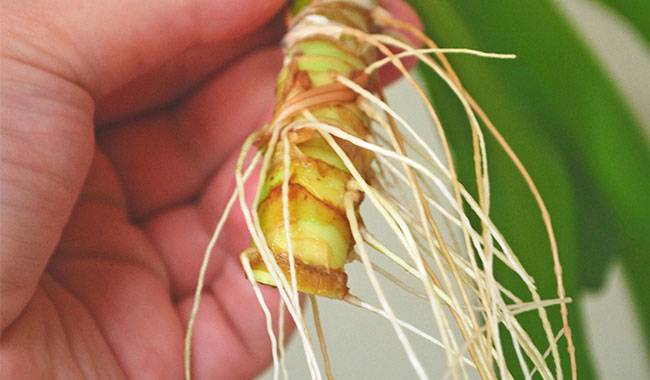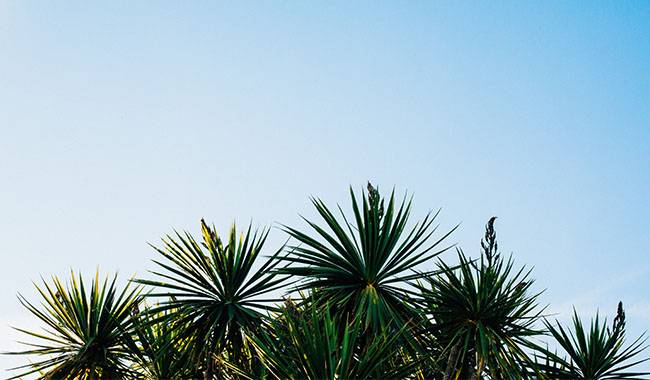
The unpretentious Yucca plant is one of the “safest” candidates for interior decoration. This plant is as good in the home as it is in the office. Even at its young size, it improves the air, subtly changes the atmosphere, and surprises with its gift for visually expanding space. Yucca plant never gets in the way. And if it does get too big, it’s easy to control. Strong trunks and beautiful clumps of stiff foliage – a true classic. And the care of the Yucca plant cannot be described as traditional or otherwise. You will learn how to grow yucca plants in ThumbGarden’s article.
YUCCA PLANT DESCRIPTION
The Yucca plant has a palm-like outline and is one of the most famous plants. It is often seen as an alternative to these classic and rather capricious giant plants and a pleasant modern alternative to tired species. The Yucca plant belongs to the asparagus family.
The Yucca plant is an evergreen giant with a pronounced trunk and very showy foliage on top. Yucca plant flowers range from 20 inches (50 cm) to over ten feet. Straight, fairly sturdy trunks of 2 inch (5 cm) or more for adult plants) bear little resemblance to the graceful branches of their main competitors, the Dragon’s Blood, and Cordyline.
The sharp edges of the sword-shaped, dense, pointed Yucca plant leaves, up to 20 inches (50 cm) long, are often a nuisance and can cause injury. The spiral arrangement of the green plants in the rosette is not easy to spot. The Yucca plant leaves remain perfectly upright and straight for a long time but begin to bend and droop as they age. The darker shades of green only emphasize the flawless outline.
TYPES OF INDOOR YUCCA PLANTS
Only 2 types of Yucca plants are planted in the room.
Spineless Yucca (Yucca gigantea), also known as Yucca elephantipes, is known for its powerful trunk and dark leaves that reach out in all directions.
Yucca plant flowers have an almost spherical rosette of leaves decorated with stiff spikes and teeth.
GROWING CONDITIONS FOR YUCCA PLANT INDOORS

Finding a suitable location for Yucca plants is not difficult at all. Although only adults are allowed, young Yucca plants are best avoided in the midday sun. They are very fond of light and can even tolerate direct sunlight, although only adults are allowed (young Yucca plants are best avoided in the midday sun). They thrive in any well-lit place and on any windowsill.
Almost all Yucca plants can also grow in semi-shade, but will usually elongate and age more quickly. It is best to increase light in winter to prevent the leaves from turning pale and the trunk from elongating. Yucca plants also tolerate artificial light well, which extends their use.
Yucca plants are happy with any room temperature throughout their active growth period. Values above 68 °F (20°C) are preferable (but not heated). Any temperature is suitable for Yucca plant overwintering: the plant copes equally well in indoor conditions and lower conditions – up to 46 °F (8 °C). Temperatures around 53 °F (12 °C) are considered optimal (Yucca is more sensitive to light reduction when warm).
Yucca plants prefer fresh air and do not like drafts or sudden temperature changes. The plant will be happy to spend time outdoors in the summer.
HOW TO CARE FOR YUCCA PLANT AT HOME

Yucca plant flowers are easy to grow and do not require much experience to handle. The main advantage of the Yucca plant is its good adaptability and ability to tolerate mistakes without compromising its beauty.
Watering and air humidity
Yucca plants do not like to be over-watered. They can tolerate short-term droughts without consequence, but the more regular the watering, the better. The substrate should be kept moderately moist, and about one-third of the soil in the pot should be allowed to dry out. In winter, watering should be reduced depending on the temperature.
Overwatering and waterlogging will be harmful at any time of the year. Do not water magnolia with cold or hard water. It is best to water gently over the edge of the pot. Do not soak the trunk and leaves in the process.
Good tolerance even to very dry air sets the Yucca plant apart from other giants. It is perfectly adapted to living rooms and offices and does not require any additional moistening measures, except near radiators and extremely hot places, when spraying can be added to the regular care. However, the plant does not tolerate the accumulation of dust and dirt. Careful “wet” wiping or cleaning of the leaves is an important part of regular care.
Nutrient and Fertilizer Composition
Yucca plants do not like excessive fertilizers – with standard fertilizers grow very vigorously and may not adapt to ceiling heights. Yucca plants can be fertilized with a fertilizer specific for ornamental foliage plants (or more often with a slightly concentrated fertilizer) within 3 to 4 weeks. In the fall and winter, fertilization should be done every 1.5 months and stopped only when temperatures below 50 °F (10 °C).
The Yucca plant welcomes foliar feeding, which can be alternated with traditional liquid feeding.
Pruning and shaping Yucca
Yucca plants are easy to control and contain. Once the plant reaches the desired height, it is pruned to overgrow the top root system or form a multi-stemmed silhouette. Trunks can be cut to the desired height at any time during the peak growth period, although spring cuttings are still easier to root. Do not discard remaining trunks: even very old, seemingly entirely woody shoots will eventually produce new shoots from hidden buds.
Handle Yucca plants with care during any manipulation, as you can easily get hurt by the leaves. After the necessary care, it is best to give the Yucca plant a little exercise – shade and keep it in constant heat, but not in direct sunlight.
Do not cut off leaves that naturally wilt and turn yellow. It is best to let the plant shed them on its own.
Repotting, containers, and substrates
Yucca plants can be grown as a single plant or in several specimens in a pot. There is no need to transplant Yucca plants in early spring. April is still the best time, but they can also be transplanted in summer.
Any loose, nutritious substrate with at least a third of sand is suitable for growing Yucca. An additional portion of perlite, coconut fiber, or vermiculite can be used to increase air permeability. Yucca plants grow well in hydroponics.
A high drainage outlet must be placed at the bottom of the container. When transplanting a yucca plant, do not press the soil so tightly that it comes into excessive contact with the roots. The size of the container and restrictions on transplanting will limit growth. If the Yucca plant needs to be restrained during transplanting, the root system can also be shortened by a quarter of its length by treating the plug. Yucca plant flowers should not be buried too deep, lowering the bottom of the trunk.
Yucca should not be watered at the same frequency immediately after transplanting. Keep the plant lightly moistened and protected from direct sunlight and heat until growth resumes.
Diseases, pests, and problems in Yucca plant growing
Yucca plants are virtually invulnerable but can still be affected by scabies, mealybugs, and spider mites. A combination of washing and insecticide treatment can quickly eliminate the problem.
Changes in leaf condition are always an indication of a problem. Leaves will curl and fall off when cold, wilt when over-watered, dry out from the tips when dry and hot, and develop white spots on the leaves in direct sunlight.
Propagation of Yucca plant
The Yucca plant is the queen of stem cuttings. It roots easily from the top and stem, and even very short stumps with 1-2 buds can be cut. Be sure to treat the cuttings with any disinfectant. New leaves will grow along the edge of the cuttings from the upper buds. Thus, by adjusting the height of the shoots, you can control the height of future plants. The cuttings root well in the substrate, even without mulch. They need steady heat and light humidity – temperatures around 68 °F (20 °C).
Yucca plants are also occasionally grown from seed. Light moisture, deep seeding, and steady heat are sufficient for germination.







